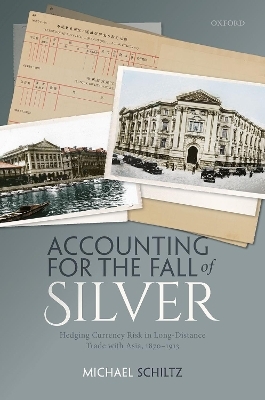
Accounting for the Fall of Silver
Oxford University Press (Verlag)
978-0-19-886502-5 (ISBN)
The second half of the nineteenth century is correctly known to have culminated in the emergence of the gold standard as the first truly international monetary regime. The processes leading up to this remarkable feat are, however, far less documented or understood. Economic historians have only recently started digging into the causes behind the 'fall of silver' that preceded the scramble for gold. It is nowadays clear that its effects were felt worldwide. Not in the least, silver depreciation severely affected East-West trade. It was, among other factors, behind the bankruptcy of several powerful institutions as the Oriental Bank Corporation. Yet at the same time, it cemented the position of other banks, some of which exist until this very day (HSBC, Standard Chartered). What did these banks know that others did not?
In Accounting for the Fall of Silver, Michael Schiltz explains that the 1870s and 1880s witnessed furious experiments with new financial products and, equally important, strategies for hedging exchange rate risk. Drawing on archives that have never been used before, the book throws new light on an important episode of nineteenth century world history. At the same time, it illuminates lesser known aspects of the first gold standard period. It draws attention to the existence of 'carry trades' between European money markets and the lesser liquid Asian periphery; and describes the creation of financial contracts with the sole aim of enabling commodity finance among Asian mercantile centers.
Michael Schiltz is Associate Professor at the Modern Japanese Studies Program at the University of Hokkaido. Before this he had a hybrid role at the Graduate Institute, Geneva, and was the digital preservationist and curator for a unique collection of historical stock exchange quotes hosted there. From 2011-2016, he was an associate professor at the Institute for Advanced Studies on Asia, University of Tokyo. Schiltz is the author of The Money Doctors From Japan: Finance, Imperialism, and the Building of the Yen Bloc, 1895-1937 (Harvard University Press, 2012).
Nomenclature; conventions; currency
Dedication
List of tables and figures
Preface and Acknowledgments
1: Introduction: Liquidity, Hard and Soft Currencies, and Trade Finance
2: Silver Risk, Silver Exports, and Sovereign Debt in the Nineteenth Century: A Brief Reappraisal
3: Trade Finance in the Late Nineteenth Century: Accounting for Silver Risk
4:
| Erscheinungsdatum | 15.01.2021 |
|---|---|
| Verlagsort | Oxford |
| Sprache | englisch |
| Maße | 165 x 245 mm |
| Gewicht | 486 g |
| Themenwelt | Geschichte ► Teilgebiete der Geschichte ► Wirtschaftsgeschichte |
| Wirtschaft ► Volkswirtschaftslehre ► Finanzwissenschaft | |
| Wirtschaft ► Volkswirtschaftslehre ► Makroökonomie | |
| ISBN-10 | 0-19-886502-3 / 0198865023 |
| ISBN-13 | 978-0-19-886502-5 / 9780198865025 |
| Zustand | Neuware |
| Haben Sie eine Frage zum Produkt? |
aus dem Bereich


